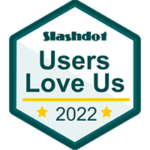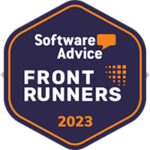What is STEM, and why is it so essential in today’s rapidly changing world? STEM stands for Science, Technology, Engineering, and Mathematics, an interdisciplinary approach that combines these fields to drive innovation and prepare students for modern careers.
According to the World Economic Forum (“Future of Jobs Report 2020”), nearly 97 million new jobs will require competencies rooted in STEM education by 2025. This underscores the importance of STEM programs in preparing individuals for the evolving demands of the modern workforce.
For more information, visit the World Economic Forum’s website.
This article will explore the STEM program, its growing global influence, and how these disciplines shape the future across various industries. Let’s dive in and discover why STEM education is crucial today. Let’s keep reading.
What is STEM: A Closer Look at Each Discipline
STEM encompasses four key areas—Science, Technology, Engineering, and Mathematics—designed to integrate knowledge and skills to solve real-world challenges. Each discipline plays a crucial role in shaping innovative solutions, pushing the boundaries of human knowledge, and driving technological advancements. Below, we explore each of these disciplines in more detail.

What is STEM Science?
STEM science focuses on understanding natural and physical phenomena through observation, experimentation, and analysis. It covers fields like biology, chemistry, physics, and environmental science. Here is a related article about fun and easy science activities for preschoolers.
Core Principles
- Scientific Method: The process of forming hypotheses, conducting experiments, and analyzing results.
- Observation and experimentation: Gathering data to understand natural phenomena.
- Analysis and conclusion: Using evidence-based reasoning to conclude data.
Real-Life Applications
- Biology: Genetic advances have led to the development of gene-editing technologies like CRISPR, which can treat genetic disorders.
- Physics: The discovery of gravitational waves has expanded our understanding of the universe, leading to more sophisticated astronomical observations.
- Environmental Science: Climate change research guides policies to reduce carbon emissions and promote sustainable practices globally.
What is STEM Technology?
STEM technology refers to applying scientific knowledge to create tools, systems, and devices that solve real-world problems. It encompasses areas like information technology, artificial intelligence, and digital communications.
Core Principles
- Innovation and development: Designing new technologies to solve problems.
- Digital transformation: The use of technology to revolutionize industries and services.
- Data management and communication: Collecting, processing, and sharing information efficiently.
Real-Life Applications
- Information Technology: Cloud computing enables businesses to store and manage vast data remotely, improving efficiency and scalability.
- Artificial Intelligence (AI): AI applications in healthcare assist doctors in diagnosing diseases faster and more accurately through machine learning algorithms.
- Digital Communications: The development of 5G networks enhances internet speed and connectivity, allowing for real-time data sharing and more efficient telecommunication services.
What is STEM Engineering?
STEM engineering involves designing, constructing, and using machines, systems, and structures to address specific human needs. It includes civil, mechanical, electrical, and chemical engineering branches.
Core Principles
- Problem-solving and design: Creating solutions to practical challenges.
- Innovation in materials and processes: Developing more efficient and sustainable building and creation methods.
- Application of scientific and mathematical principles: Using knowledge from science and math to inform engineering designs.
Real-Life Applications
- Civil Engineering: Engineers design and build infrastructure like bridges, roads, and skyscrapers that support modern cities.
- Mechanical Engineering: Robotics engineers create machines that can automate manufacturing processes or perform complex tasks in environments like space.
- Chemical Engineering: Chemical engineers seek sustainable alternatives to fossil fuels, which drives the development of renewable energy sources like biofuels.
What is STEM Mathematics?
STEM mathematics studies numbers, quantities, shapes, and patterns, using models and theories to solve real-world problems. It forms the foundation for many other STEM fields, including physics, engineering, and data science.
Core Principles
- Problem-solving through quantitative analysis: Applying mathematical concepts to solve real-world problems.
- Theoretical modeling and simulation: Using mathematical models to predict and optimize outcomes.
- Data analysis and algorithms: Developing algorithms to process large data sets efficiently.
Real-Life Applications
- Statistics and Probability: Used in fields like epidemiology to model and predict disease outbreaks, as seen during the COVID-19 pandemic.
- Cryptography: Mathematics underpins encryption algorithms that secure online communications and digital transactions.
- Data Science: Mathematicians develop models that analyze massive datasets, such as in finance for risk management or in marketing for consumer behavior analysis.
STEM education brings together science, technology, engineering, and mathematics to equip students with the skills needed for real-world problem-solving and innovation. Each discipline is crucial in building a strong foundation for future careers.
Let’s explore STEM programs, a hands-on educational approach that integrates theory with real-world applications through interdisciplinary projects and industry partnerships.
What is STEM Program: Is it More Than Just Classes?
STEM programs are designed to provide students with a learning experience that extends beyond traditional classroom boundaries. Below, we highlight the essential components that make STEM programs so impactful:
Interdisciplinary Approach
STEM education integrates science, technology, engineering, and mathematics, emphasizing their interconnections. This approach allows students to tackle complex problems using multiple perspectives.
For example, research shows that students who engage in interdisciplinary learning perform better in solving real-world challenges because they learn to connect different disciplines and apply holistic thinking in practical scenarios.

Project-Based Learning
STEM programs often use project-based learning (PBL) to engage students with real-world problems. One study found that third-grade students in PBL STEM classrooms outperformed their peers on science tests by eight percentage points, demonstrating the effectiveness of learning through projects.
These hands-on projects are particularly successful in retaining students’ attention and fostering more profound learning, as seen in programs like the “Whose Water is it?” project, where students examined water ecosystems and interacted with experts in the field.
Industry Partnerships
Collaboration with industry partners is a hallmark of STEM programs. For example, schools like MC² STEM in Ohio have partnered with NASA and GE to provide students with internships and mentorship opportunities.
These collaborations give students hands-on experience, making their learning relevant and directly connected to career pathways.
Research also supports that students in career-focused STEM programs earn up to 11% more annually than those from traditional education models.
STEM programs push students to engage with real-world challenges through innovative and creative thinking. What is STEM education truly about? It equips students with the tools they need to succeed in modern industries, fostering adaptability and critical thinking.
What is STEM Education, And Why Does it Matter?
STEM education is about more than mastering science, technology, engineering, and mathematics—it’s about shaping the next generation of innovators who will lead industries and overcome global challenges.
Are you curious about how STEM drives global competitiveness, sparks innovation, and opens doors to future careers? Let’s dive deeper and explore STEM education’s impact on shaping tomorrow’s world!

Global Competitiveness
According to the Center for Security and Emerging Technology at Georgetown University, China graduated 3.57 million STEM students in 2020, positioning itself as a STEM technology and engineering leader. These skills are crucial for maintaining a competitive edge in renewable energy and artificial intelligence industries. For further information, visit the Center for Security and Emerging Technology.
Innovation and Problem-Solving
According to the U.S. Bureau of Labor Statistics, STEM professionals drive innovations across healthcare and sustainable energy sectors. For instance, AI-driven healthcare tools enable faster, more accurate diagnoses, showcasing how STEM education contributes to growth and efficiency in critical industries. For further information, visit the U.S. Bureau of Labor Statistics website.
For more details, please visit the U.S. Bureau of Labor Statistics.
Career Opportunities
According to the U.S. Bureau of Labor Statistics, STEM fields offer some of the fastest-growing and highest-paying jobs, with an 8% projected job growth by 2029. Tech, data science, and engineering careers provide direct pathways to lucrative opportunities. What is the STEM program? It serves as the foundation for securing a future in these high-demand fields. For further information, visit the U.S. Bureau of Labor Statistics website.
For more details, please visit the U.S. Bureau of Labor Statistics.
Addressing Societal Challenges
STEM education equips students with the tools to solve global challenges like climate change and healthcare crises. Biomedical engineers and environmental scientists are at the forefront of designing solutions that directly impact society, making what is STEM science essential for the future.
Are you curious to see where STEM education is heading next? Explore the latest trends in STEM education and discover how AI, augmented reality, and sustainability initiatives are shaping the future of learning. Keep reading to learn more about how emerging trends are redefining education!
Latest Trends in STEM Education: A Glimpse Into the Future
STEM education is evolving rapidly, and here’s how:
AI and Machine Learning Integration
According to HolonIQ, artificial intelligence and machine learning are transforming STEM education by enabling personalized learning experiences. AI-powered tools assess student progress and customize educational content to fit individual needs. The global AI in education market is projected to reach $25.7 billion by 2030, demonstrating significant growth and investment in these technologies. For further information, visit HolonIQ’s website.
Virtual and Augmented Reality in STEM Learning
Virtual reality (VR) and augmented reality (AR) are taking STEM learning to new dimensions. Students can now explore virtual labs and participate in 3D simulations, making complex concepts easier to grasp. For instance, VR is used in medical schools to simulate surgeries, giving students practical experience without the risks.
Emphasis on Sustainability and Green Technologies
According to IRENA, STEM programs increasingly emphasize sustainability, encouraging students to innovate in renewable energy and environmental science. Green engineering, for example, enables students to develop eco-friendly technologies to combat climate change. In 2020, the global renewable energy sector employed 12 million people, highlighting the growing demand for expertise in green technology.
For further information, visit IRENA’s website.
Inclusion and Diversity Initiatives in STEM
According to the National Girls Collaborative Project, STEM education is increasingly prioritizing inclusivity, focusing on closing the gender and racial gaps in science and technology fields. Programs like Girls Who Code and Black Girls STEM are making significant strides in breaking barriers and ensuring a more diverse workforce in future STEM careers. In 2019, women constituted only 28% of the STEM workforce, but initiatives like these are actively working to increase those numbers. For further information, visit the National Girls Collaborative Project’s website.
These trends are transforming how we approach STEM, ensuring students are ready for the future of education and innovation. Want to know which careers will lead these changes? Let’s explore STEM careers, where opportunities in data science, AI, and green technologies are shaping tomorrow.
STEM Careers: The Jobs of Tomorrow
STEM careers are rapidly growing, particularly in data science, AI, renewable energy, and cybersecurity. These fields offer high salaries—AI specialists earn upwards of $120,000—and allow professionals to solve real-world challenges and make a lasting impact. Let’s delve deeper into STEM education’s specific challenges and considerations today.
High-Demand STEM Careers
According to LinkedIn’s 2020 Emerging Jobs Report, STEM careers continue to be in high demand, particularly in fields like data science, renewable energy, AI, and cybersecurity. Data science, for instance, has seen a 37% growth over the past few years as organizations increasingly depend on big data for strategic decision-making. For further information, visit the LinkedIn 2020 Emerging Jobs Report.
Emerging Fields in STEM
New fields like AI and machine learning are changing how we live and work, while biotechnology and green technology are helping solve important global issues. These growing industries need fresh ideas and problem solvers, making STEM education essential for preparing kids to thrive in the future.

Salary Prospects and Job Satisfaction
According to the U.S. Bureau of Labor Statistics, STEM careers offer some of the highest salaries across industries. AI specialists, for example, can earn over $120,000 annually, while data scientists often start with salaries around $100,000. These roles also report high job satisfaction due to their innovative and impactful nature. For further information, visit the U.S. Bureau of Labor Statistics website.
While STEM careers are booming, preparing for these fields presents significant challenges. From bridging the gender gap to keeping up with rapid technological advancements, STEM education must continuously adapt. Let’s now dive into these challenges and explore what’s being done to overcome them.
Challenges and Considerations in STEM Education
STEM education presents several key challenges that educators and institutions need to address to prepare future leaders effectively:
Addressing the Gender Gap
Efforts to close the gender gap in STEM include initiatives like Black Girls Code and Million Women Mentors, which provide targeted technical training and leadership development for underrepresented groups. Research shows that women in STEM often have strong confidence in their problem-solving and leadership abilities, but societal stereotypes and a lack of mentors continue to present challenges.
Expanding mentorship and support programs is essential to increasing women’s participation in STEM.
Keeping Pace with Technological Advances
Rapid technological advancements require constant updates to educational curricula. Partnerships with industries are helping schools offer students real-world experience, ensuring they are equipped with the latest AI, robotics, and more skills.
Balancing Theory with Practical Skills
Many graduates have theoretical knowledge but need more practical experience. By incorporating internships and hands-on projects, institutions are better-preparing students for the demands of the workforce.
Addressing these challenges is essential to ensuring STEM education evolves to meet the demands of today’s world. With the groundwork set, how can aspiring students take their first steps into STEM? Let’s explore practical ways to get started and kick off your STEM journey.
How to Get Started in STEM: Your First Steps
Starting your STEM journey might seem daunting, but you can quickly dive in with the proper steps. Here’s how to get started and build your skills in STEM.
Explore Free Online Resources
Start by exploring online resources that explain what STEM is and dive into specific fields like STEM engineering and STEM technology. Websites like Khan Academy, Coursera, and edX offer introductory courses to build foundational knowledge. You can also explore STEM-focused YouTube channels for quick tutorials and insights.

Enroll in STEM Programs and Boot Camps
Participating in local or online STEM programs and boot camps can give students valuable experience in robotics, coding, and STEM science. Many of these programs emphasize practical, real-world applications to accelerate learning. For a comprehensive guide to the top STEM camps, check out our article on the Top 8 STEM Summer Camps for 2024: A Complete Guide, which explores the best options available for young innovators looking to expand their skills and knowledge.
Apply for Internships and Mentorships
Gain real-world experience by applying for internships or seeking a mentor. Many companies and educational institutions allow students to work on projects and gain practical insights. Websites like LinkedIn and Indeed list STEM internships that can jumpstart your career.
Take Action: Create a STEM Portfolio
Start building a portfolio showcasing your work and projects. Whether it’s coding projects, engineering designs, or scientific research, a portfolio helps you stand out when applying for internships or jobs. Platforms like GitHub (for tech projects) or Google Drive (for presentations and research) are great places to organize and showcase your work. This step puts your learning into action and demonstrates your skills to potential employers.
By following these steps, you’ll be well on your way to establishing a strong foundation in STEM and developing the skills you need for future success.
The Future of STEM: What’s Next?
Starting your STEM journey might seem daunting, but you can easily dive in with the right steps. Here’s how to get started and build your skills in STEM.
Biotechnology Growth
According to Global Market Insights, biotechnology is projected to be one of the fastest-growing STEM sectors, with the global market expected to expand from $752 billion in 2020 to $1,683 billion by 2030. This surge is fueled by advancements in healthcare, agriculture, and bioengineering to address critical issues like food security and personalized medicine. For further information, visit the Global Market Insights website.

Space Exploration
According to Morgan Stanley, space exploration is entering a new era with increased private-sector involvement. Companies such as SpaceX and Blue Origin are developing technologies that could soon make space tourism a reality. By 2040, the space economy is projected to generate over $1 trillion annually, with significant implications for aerospace engineering, robotics, and space mining. For further information, visit the Morgan Stanley website.
And according to Statista, the rise of digital infrastructure has made cybersecurity a top priority. The global cybersecurity market is projected to grow from $217 billion in 2021 to $345 billion by 2026, driven by increasing cyber threats and the need for secure digital networks. This expansion offers significant job opportunities in STEM fields, particularly in information security and digital risk management. For further information, visit the Statista website.
These facts underscore how STEM is not just about today’s challenges but will continue to shape tomorrow’s world in exciting, transformative ways.
Save Time and Effort with an Online STEM Program Registration
Efficient organization is key to running a successful STEM program, and Jumbula’s registration software offers the tools you need to streamline the process. It simplifies enrollment, enhances communication, and helps manage critical tasks like payments and scheduling, letting you focus on delivering a great educational experience.
Whether you’re offering coding classes or robotics workshops, Jumbula is designed to meet the specific needs of STEM programs, ensuring smooth operations and better participant engagement.
Let’s read more to see how Jumbula can enhance the STEM program management:
Real-Time Enrollment Monitoring
Jumbula provides instant visibility into enrollment numbers, allowing educators and program leaders to quickly adjust class sizes, allocate resources, and manage staffing needs in real time. This ensures that your STEM program runs smoothly without overloading or under-resourcing any part of the curriculum.
Efficient Staffing and Coordination
Managing your STEM program’s staffing and supervision is effortless with Jumbula. The software allows you to efficiently organize staff, volunteers, and supervisors for your workshops and activities, ensuring every session is well-coordinated.
Personalized Participant Support
With Jumbula, educators can track participant needs and preferences, allowing for personalized support. Whether it’s specific accommodations or targeted learning assistance, the platform helps tailor the program to meet each student’s needs.

Boosted Participation
The convenience of Jumbula’s online registration makes it easier for parents to enroll their children, leading to higher participation rates. By simplifying the process, you reach a broader audience, increasing engagement and enrollment in your STEM activities.
Seamless Financial Management
Jumbula automates payment confirmations and provides tools for tracking financial data. This streamlined approach helps program administrators manage budgets effectively, ensuring transparency and ease in financial planning.

Automated Communication
Jumbula’s automated emails and notifications keep parents and participants informed. The system sends timely updates about program details, deadlines, and important reminders, reducing manual follow-up and enhancing communication.
Jumbula offers over 140 features to support various business needs, including efficiently managing STEM programs. Explore our articles to learn more about the Top Benefits of Online Registration Systems for Businesses or get tips on Choosing the Right Registration Software.
You can access features that align perfectly with your program with just a click. Explore Jumbula’s complete feature set and discover how it can enhance your business operations.
Wrap Up
What is STEM, and how does it align with your future goals? As we navigate an increasingly tech-driven world, the importance of STEM education has never been more significant.
According to a report by the U.S. Bureau of Labor Statistics, employment in STEM occupations is projected to grow by 8% from 2019 to 2029, which translates to about 1 million new jobs. This rapid growth underscores the potential for data science, AI, and renewable energy careers.
As STEM programs continue to expand, educators and administrators need tools that enhance program management and communication. Jumbula’s innovative registration software aligns perfectly with the evolving needs of STEM programs. It streamlines enrollment, automates communication, and offers data-driven insights, allowing educators to focus on cultivating the next generation of innovators.
With Jumbula’s integrated technology, program administrators can seamlessly manage operations, leaving more time to inspire students and drive transformative learning experiences.
Considering the benefits of integrating STEM into your educational programs, why not take the next step with Jumbula? Enjoy a free trial or book a demo today—no credit card is required. Discover how registration software can streamline your operations, enhance communication, and support your journey in shaping future innovators.










